Best aero helmets: fast lids to up your speed
The best aero helmets can give you that extra edge when you want to ride faster


The best aero helmets can save you energy on a ride while still being comfortable to wear. While a full time trial helmet will usually be more aero, an aero road helmet will offer improved aerodynamics over a vented road bike helmet. It should still have enough ventilation to keep your head cool on all but the hardest climbs on the hottest days, making aero helmets among the best road bike helmets.
Pretty much every helmet brand will have one or more aero helmets in its range, although, because of the extra development costs for their aerodynamic features they tend not to feature among the best budget helmets.
As with other helmets, aero bike helmets will include the full range of safety features. The crash testing regulations are the same for any helmet and an aero helmet will have passed these. In addition, helmet makers may have included other safety features like sliding plane technology to protect against a wider range of impacts.
Below you'll find our pick of the best aero helmets that we've tested and lower down on the page our guide to how to choose the best aero helmet for you.
Best aero bike road helmets

Specifications
Reasons to buy
Reasons to avoid
Rather than using MIPS or another alternative, Kask tests its helmets to the WG11 oblique impact protocol, which they all pass and which it says will ensure increased crash protection.
The Kask Utopia Y is the latest version of its aero road helmet, as used by Team Ineos. The closed looks disguise deep internal channelling, while vents under the brow push air over your forehead. There's thick padding inside to avoid pressure points.
We found the positioning of vents keeps the worst of the rain off, whilst still providing a significant amount of cooling when riding in warmer weather.
Overall, the Utopia Y performed well in a range of weather conditions and rides, making it a great all-round option for the aero-conscious that are looking for a helmet for year-round use. And with nine color options, you can match the rest of your kit.
Read more: Kask Utopia Y aero bike helmet full review
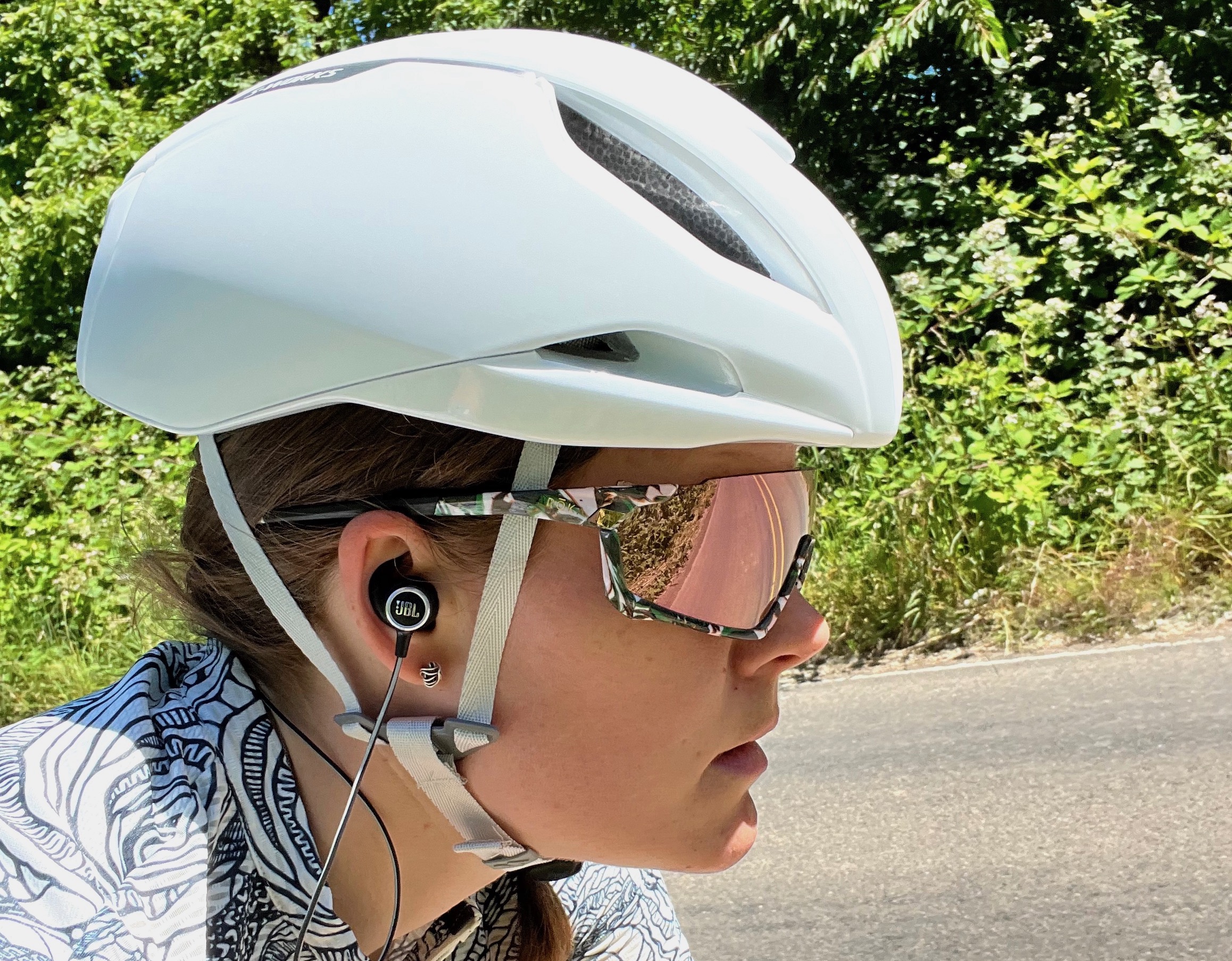
Specifications
Reasons to buy
Reasons to avoid
We found the third generation of the Specialized Evade helmet is surprisingly cool for an aero lid and provides all-day comfort. Its large front vents combine with equally large rear vents and a rear diffuser to direct plenty of air over your head as you ride.
Added safety comes from MIPS Air Node, where MIPS is integrated into the helmet's padding rather than forming a separate liner. It's lighter and less intrusive than the original MIPS system, so that more air is circulated through the interior of the helmet - we were really impressed with this update.
We found that the long narrow shape of the helmet worked well for us - being comfortable on both long and hot rides - but it is a shape that might not suit others so well, so do make sure to try before you buy with this one.
Read more: Specialized S-Works Evade 3 aero bike helmet full review
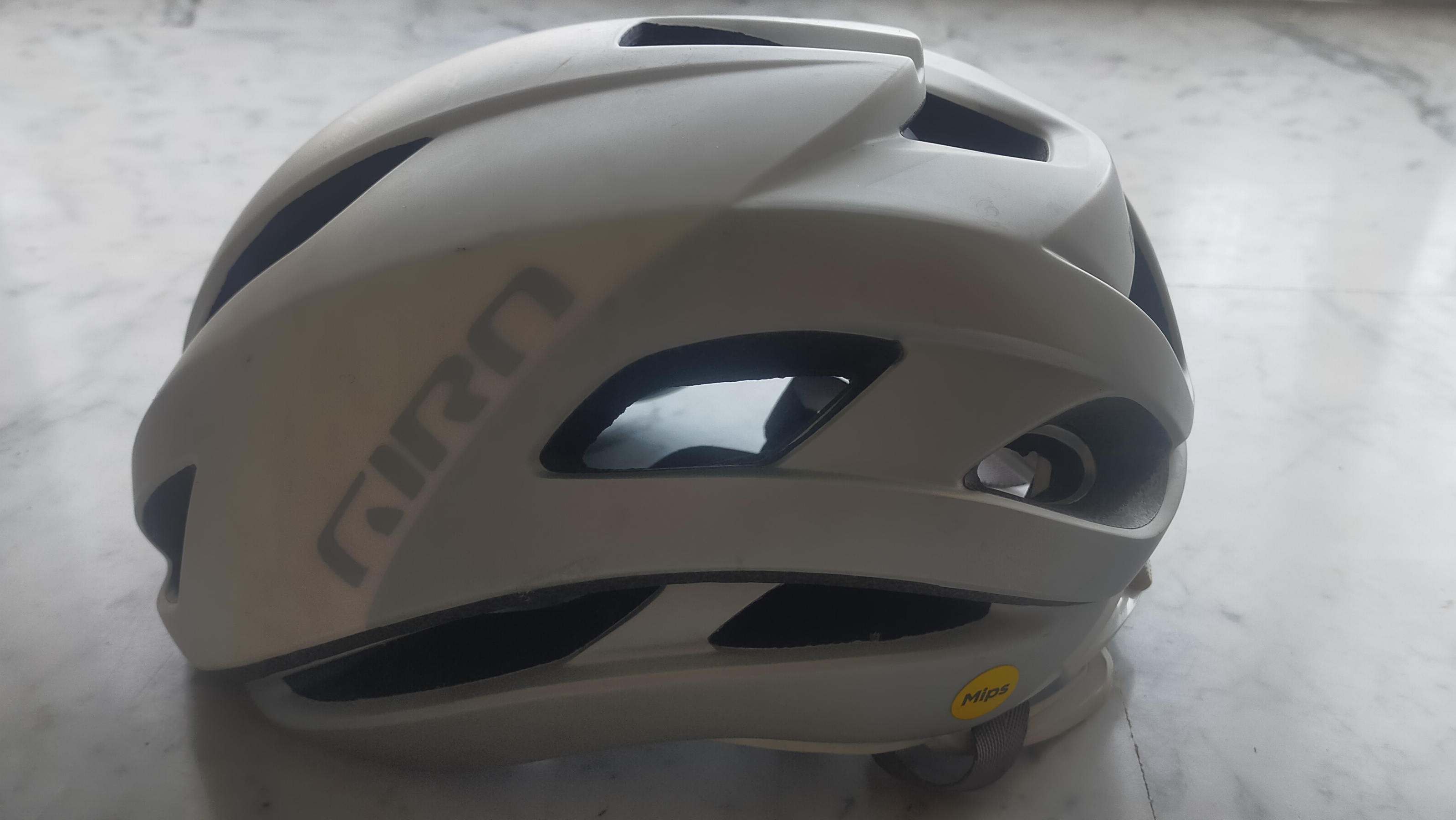
Specifications
Reasons to buy
Reasons to avoid
Giro's aero road helmet uses its MIPS Spherical tech, also seen in the Giro Aether and Aries helmets, which are more vented. This allows the outer layer of the helmet to slide relative to the inside in a glancing crash. It's a neater solution than the more standard plastic liner found in many MIPS helmets and provides a more integrated helmet design.
The Eclipse Spherical is very fast too - Giro says that it's the fastest aero helmet ever, which we sort-of corroborated with our tester's fastest-ever descent and increased average speed. Placebo effect? Whatever, the Giro Eclipse is comfortable with good airflow that ensured that his head didn't overheat in Spain's 35°C / 95°F heat.
Read more: Giro Eclipse Spherical aero bike helmet full review
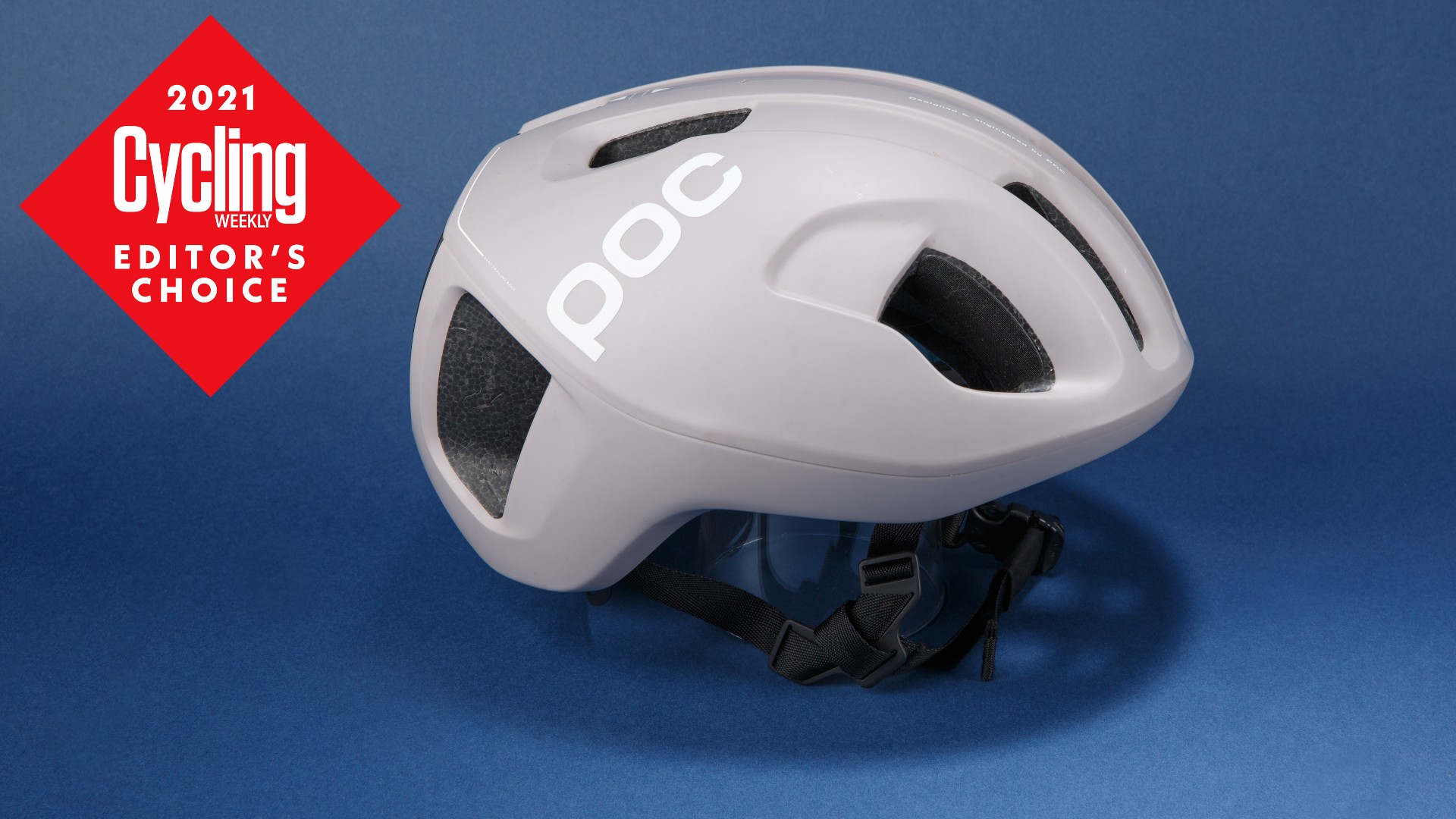
POC Ventral Spin helmet
Specifications
Reasons to buy
Reasons to avoid
Another pro-level aero helmet with great airflow, the POC Ventral Spin has the brand's signature big vents, which it's CFD tested to ensure that they don't slow you down.
POC uses its own SPIN sliding plane tech in the helmet, which is silicone padding aimed at absorbing G-force in an impact. With POC majoring on sunglasses as well as helmets, we were pleased to see that the Ventral Spin has been designed for easy stashing of your sunnies when the road heads uphill.
We found it fits really well, with no pinching or squeezing at the temples in our experience. The retention system keeps the helmet securely in place, even when detouring off-road - this helmet will cover all of your riding needs.
Read more: POC Ventral SPIN aero bike helmet full review
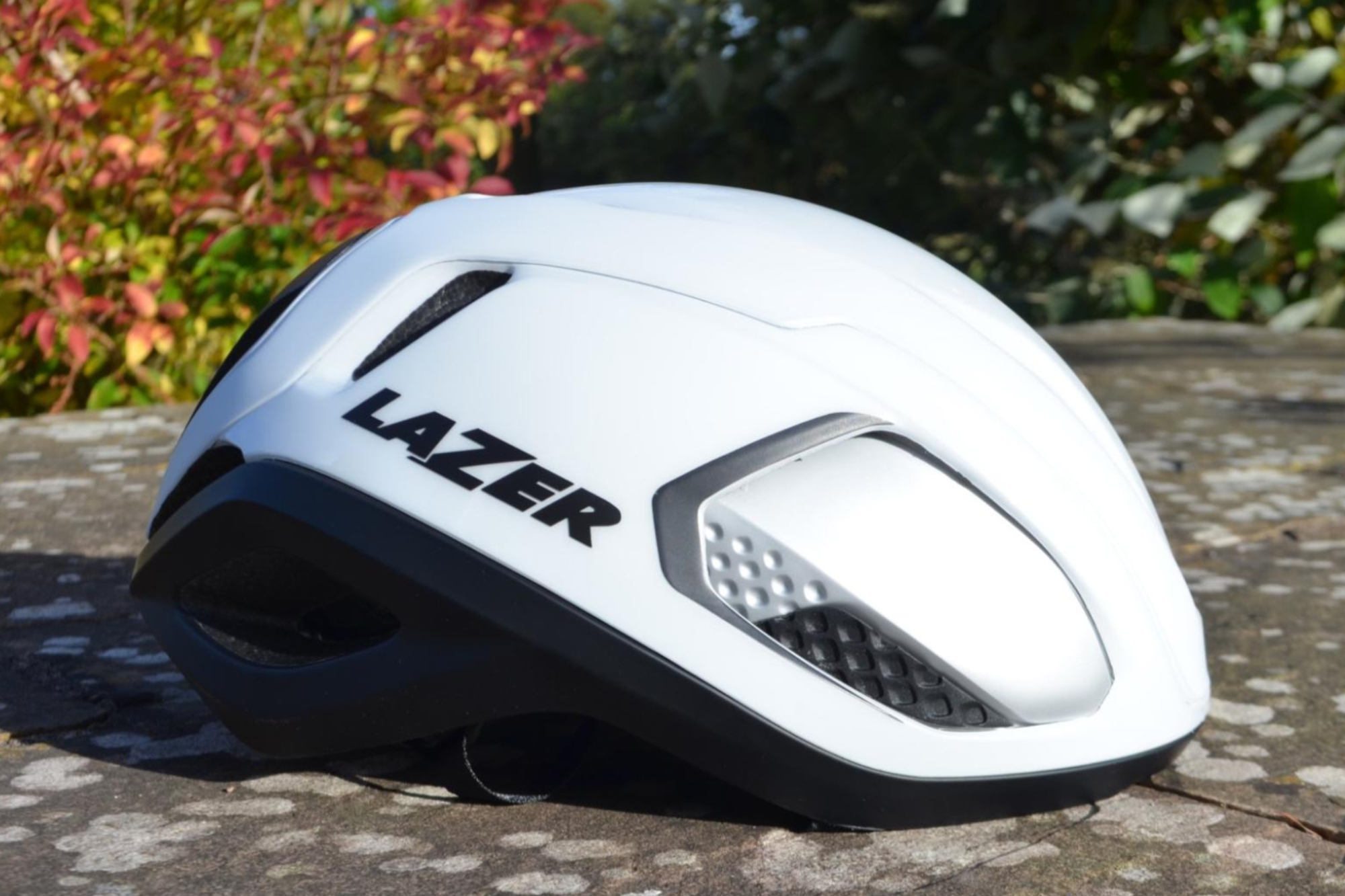
Specifications
Reasons to buy
Reasons to avoid
Lazer has yet another take on impact safety with its KinetiCore crumple zones, which are built into the helmet's structure, rather than using a separate liner. This makes the Lazer Vento a more compact design than some aero helmets, although the weight is still middle-of-the-road.
The helmet feels comfortably airy - even when we wore the helmet on longer, slower climbs - despite a more enclosed-looking design than some competitors and subjectively it feels fast. It's easy to adjust as well, although we found perching our sunglasses in the vents didn't work very well.
Read more: Lazer Vento KinetiCore aero bike helmet full review
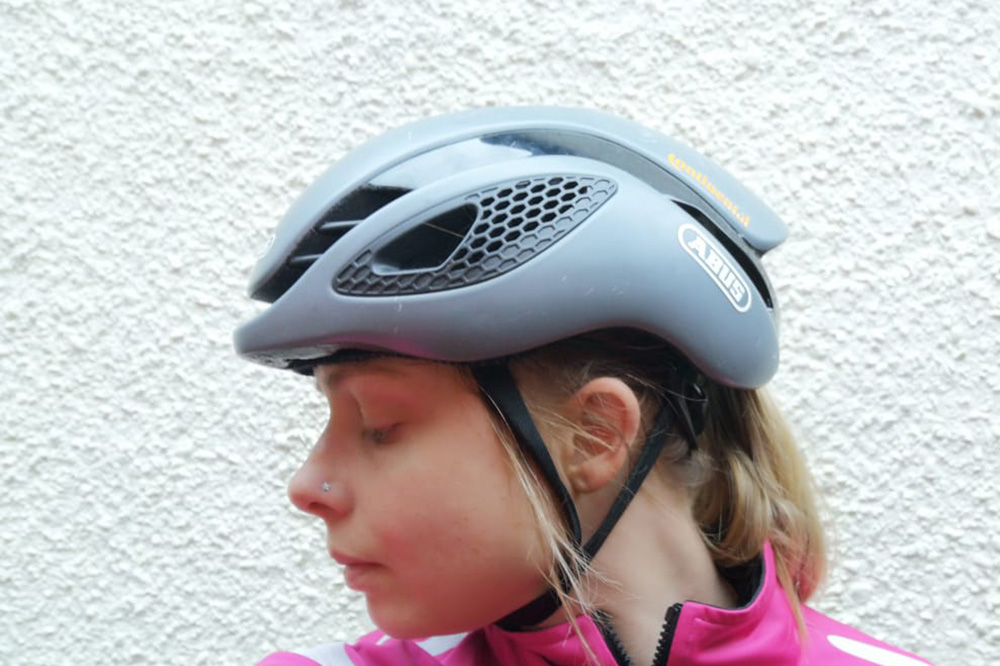
Specifications
Reasons to buy
Reasons to avoid
Abus says that its helmet is aero regardless of your head position and the wind direction as you ride. The helmet is quite low profile and well-padded with a brow pad to help keep sweat out of the eyes.
There's venting designed to channel air over the crown of your head - which we've found effective both indoors and outside on hot climbs and cold winter days - while glasses stay put in the front vents.
Abus is one of the few helmet makers not to include a rotational safety system, such as MIPS, in its helmets, although that does make for a competitively light weight. There are no less than 13 color options though.
Read more: Abus GameChanger aero bike helmet full review
Buyer's guide to aero helmets
If you're thinking of buying an aero helmet or have an aero helmet on your shortlist of the best road bike helmets for your next buy, here are the things you need to think about before deciding.
How are aero bike helmets developed?
Most brands which have an aero helmet in their range will have done the donkey work to ensure that their design really is aerodynamic. That usually means a combination of computational fluid dynamic modelling (CFD) of the airflow over their helmet and wind tunnel testing.
The latter gives a more realistic estimate of watt savings. For example, Specialized has its own wind tunnel which it's used to fine-tune the aerodynamics of its latest helmet range, while Lazer has a third-share in the Flanders Bike Valley wind tunnel, along with Ridley and Bioracer.
HJC makes motorcycle helmets as well as bike helmets and has its own wind tunnel in South Korea it uses to test both.
Will an aero helmet make me faster?
Helmet brands will typically quote a time saved number for their aero helmets. It's worth bearing in mind that this can be at quite high speeds though. For example, Giro quotes a one minute time saving for this Eclipse Spherical helmet over its own aero Vanquish model, but that's at 25mph over 100 miles. Air resistance increases as the cube of speed, so if you're riding half that speed you'll save four times less.
The other factor that can affect a helmet's aero efficiency is your head position. A helmet will typically be most aerodynamically efficient in a ride position that funnels air into the front vents. When you turn your head or sit up, for example, those aero gains may be lost.
Having said that, an aero helmet will give you some free speed, even if not a huge amount and there are few downside trade-offs.
Will an aero helmet make my head hotter?
Part of the testing in developing aero road bike helmets will involve modelling the airflow through the helmet and over your head, not just over the outside of the helmet shell. As with the air flowing over the outer surface of the helmet, the more streamlined this is, the more aerodynamic the helmet should be.
Most aero helmets include inlet ports on their front face and outlets at the rear, with deep internal channels running front to back to connect them. They usually have fewer vents and more enclosed sides than a non-aero helmet though, to help keep the airflow over the outer face of the helmet smoother.
At all but the slowest speeds, these features will channel plenty of air over your head, so you're not likely to feel any hotter than in a standard vented helmet.
Having said that, even the pros will often switch from an aero helmet to a more vented design for hot, mountainous races and keep their aero helmets for fast, flat stages and races.
Are aero helmets uncomfortable to wear?
Other than the effect of possibly diminished airflow when riding more slowly on hot days, an aero helmet is likely to be just as comfortable as a non-aero helmet.
If you get the right sized helmet for you, there's the same adjustability to suit your head size from an inner cradle that can be adjusted up and down and a rear circumference adjuster.
But, as with any helmet, the internal shape of an aero helmet varies depending on the brand, so it's worth trying before you buy to ensure that your planned purchase is comfortable and fits the shape of your head, with adequate padding in the right places and no pressure points.
Get The Leadout Newsletter
The latest race content, interviews, features, reviews and expert buying guides, direct to your inbox!
Paul started writing for Cycling Weekly in 2015, covering cycling tech, new bikes and product testing. Since then, he’s reviewed hundreds of bikes and thousands of other pieces of cycling equipment for the magazine and the Cycling Weekly website.
He’s been cycling for a lot longer than that though and his travels by bike have taken him all around Europe and to California. He’s been riding gravel since before gravel bikes existed too, riding a cyclocross bike through the Chilterns and along the South Downs.
-
 Trek, State and Specialized raise bike prices while other brands limit US releases — Is this just the beginning?
Trek, State and Specialized raise bike prices while other brands limit US releases — Is this just the beginning?As tariffs hit, the bike industry is forced to adapt, whether through price increases, limited releases, or a restructuring of supply chains
By Anne-Marije Rook
-
 How I got my non-cyclist friend hooked on riding bikes — and how you can, too
How I got my non-cyclist friend hooked on riding bikes — and how you can, tooWith a little bit of gentle guidance, “bikes aren’t my thing” can turn into “when’s our next ride?”
By Marley Blonsky